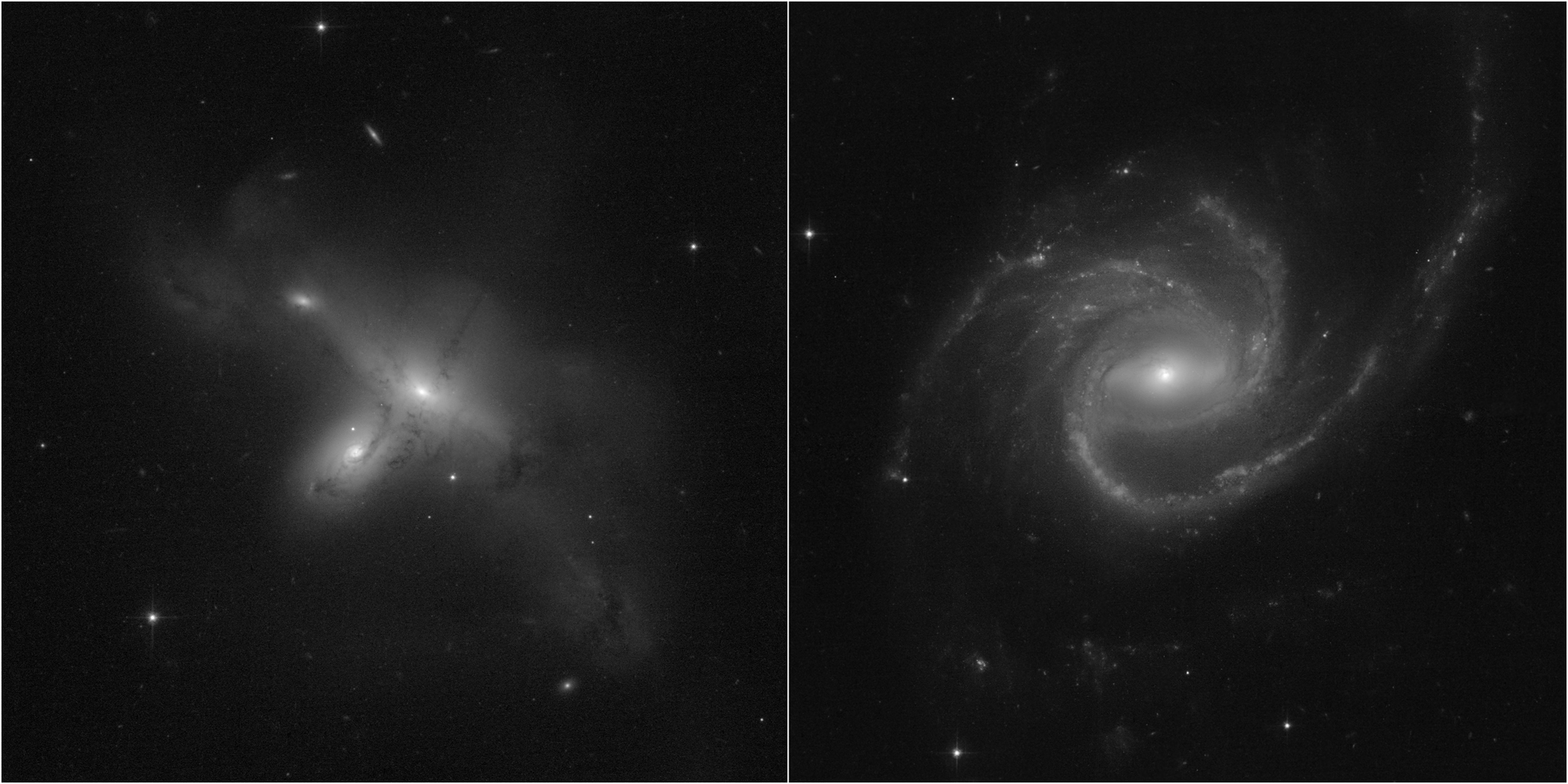See the first photos from the Hubble Space Telescope after a major computer malfunction
And it started with some seriously weird galaxies.

Hubble fans, rejoice. After more than a month with its camera eye closed, the famed Hubble Space Telescope is snapping photos of the cosmos once more.
The iconic (and aging) space observatory resumed science operations Saturday (July 17) after weeks of slumber while NASA engineers scrambled to fix a computer glitch. That work paid off with this photo, which shows two of the first new images from Hubble since its computer woes began.
"I'm thrilled to see that Hubble has its eye back on the universe, once again capturing the kind of images that have intrigued and inspired us for decades," NASA Administrator Bill Nelson said in a statement. "This is a moment to celebrate the success of a team truly dedicated to the mission." NASA and the European Space Agency launched the Hubble Space Telescope in April 1990.
More: The best Hubble Space Telescope images of all time!
The black-and-white images show different galactic views. On the left is an object called ARP-MADORE2115-273, which is actually two different galaxies caught in an intergalactic tango. It's about 297 million light-years from Earth.
"Astronomers had previously thought this was a "collisional ring" system due to the head-on merger of two galaxies," NASA wrote in an image description. "The new Hubble observations show that the ongoing interaction between the galaxies is far more complex, leaving behind a rich network of stars and dusty gas."
The second view from Hubble (in the right side of the image) shows ARP-MADORE0002-503, a large spiral galaxy located about 490 million light-years from Earth. If you thought this was just another spiral galaxy like our own Milky Way, think again.
Get the Space.com Newsletter
Breaking space news, the latest updates on rocket launches, skywatching events and more!
"Its arms extend out to a radius of 163,000 light-years, making it three times more expansive than our Milky Way Galaxy," NASA wrote. "While most disk galaxies have an even number of spiral arms, this one has three."
Related: Hubble trouble is latest glitch in space telescope's long, storied history
The new views from Hubble are just two images from a series of test photos as NASA and the European Space Agency work to reboot the space telescope.
Hubble went offline on June 13 after its main payload computer went offline, sending the observatory into a protective "safe mode" during which time all science was stopped. After weeks of troubleshooting, engineers traced the glitch to a wonky circuit between Hubble's Power Control Unit and the payload computer and managed to reactive the observatory by switching to a backup computer.
Since then, Hubble scientists and engineers are snapping test images of galaxies, globular clusters and auroras on Jupiter.
"I'll confess to having had a few nervous moments during Hubble's shutdown, but I also had faith in NASA's amazing engineers and technicians," astronomer Julianne Dalcanton of the University of Washington in Seattle, who led the program that captured the new photos, said in a statement. "Everyone is incredibly grateful, and we're excited to get back to science!"
Email Tariq Malik at tmalik@space.com or follow him @tariqjmalik. Follow us @Spacedotcom, Facebook and Instagram.
Join our Space Forums to keep talking space on the latest missions, night sky and more! And if you have a news tip, correction or comment, let us know at: community@space.com.

Tariq is the Editor-in-Chief of Space.com and joined the team in 2001, first as an intern and staff writer, and later as an editor. He covers human spaceflight, exploration and space science, as well as skywatching and entertainment. He became Space.com's Managing Editor in 2009 and Editor-in-Chief in 2019. Before joining Space.com, Tariq was a staff reporter for The Los Angeles Times covering education and city beats in La Habra, Fullerton and Huntington Beach. In October 2022, Tariq received the Harry Kolcum Award for excellence in space reporting from the National Space Club Florida Committee. He is also an Eagle Scout (yes, he has the Space Exploration merit badge) and went to Space Camp four times as a kid and a fifth time as an adult. He has journalism degrees from the University of Southern California and New York University. You can find Tariq at Space.com and as the co-host to the This Week In Space podcast with space historian Rod Pyle on the TWiT network. To see his latest project, you can follow Tariq on Twitter @tariqjmalik.









